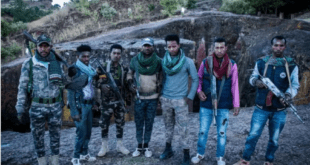“Today you will see for yourselves, the faces of your enemies as they are brought before you! We will read you their names and the crimes they committed!” announced the loudspeaker, driving through streets. The public was being invited to come out and witness something they’d never seen before. So they came out in droves. Not because they wanted to see an execution, but more so because they wanted to see if their loved ones, friends or neighbors were among the names that would be called. In the late  1970’s following the Ethio-Somalia border war, in which the Ethiopian government lost control of much of the east and southeast of the country, killings were common practice. The regime was still consolidating its power and although they had no shortage of enemies, many of their victims were simply ordinary citizens. The crackle of gunfire broke the silence after dark. Another mass execution. Sometimes the victims would be buried in mass graves and other times the bodies of “anti-revolutionaries” were labelled and displayed in public for everyone to see. On this day the message was to be delivered directly to the public.
1970’s following the Ethio-Somalia border war, in which the Ethiopian government lost control of much of the east and southeast of the country, killings were common practice. The regime was still consolidating its power and although they had no shortage of enemies, many of their victims were simply ordinary citizens. The crackle of gunfire broke the silence after dark. Another mass execution. Sometimes the victims would be buried in mass graves and other times the bodies of “anti-revolutionaries” were labelled and displayed in public for everyone to see. On this day the message was to be delivered directly to the public.
The Ural truck arrived in an open area on the city’s outskirts carrying tens of prisoners. They were loaded off the trucks, their bodies weak and frail from the torture. Their faces were covered with white sheets and their hands were tied behind their backs. They were lined up next to the ditch, and their names were read along with their alleged crimes. The speaker then called on volunteers from the police to come forward and carry out the deed. After repeated calls, police officers stood still in their tracks. The speaker then called on the militia to come forward, and hundreds of peasant militiamen rushed forth to volunteer themselves. The executioners were selected and the remainder were turned away. The signal was given and one by one a shot was fired and the victims began to fall forward into the ditch. After the first few victims, a second signal was given and suddenly the militia opened automatic fire, which caused a mass panic and a stampede with crowds running away from the massacre. The speaker called on the crowd to stop running and come back. But the crowd didn’t look back. It was 1978, and Dirre Dhawa was a killing field.
Employees at the cotton factory ended their night shift and headed home, as the morning shift arrived. At the factory entrance they would stumble on the bodies of young men with notes attached to them, denouncing them as “anti revolutionary”, “narrow nationalist” and so on. When bodies of young men scattered the city each morning, relatives and friends of prisoners and missing people would catch the local gossip and rush to the dumping grounds to see if they could identify any of the bodies as their loved ones. On one such morning, a teenage boy on his way home recalls seeing the lifeless body of a boy whom he had known. As he continued home feeling sick to his stomach, a woman scurried towards him crying, “they said they saw my boy down that way. Did you see him!?”.
He didn’t know how to reply. What do you tell a mother whose world was about to come crashing down before her?
“..I didn’t see anything..” he replied, and she continued on her way.
Sourse; Gulalepost




